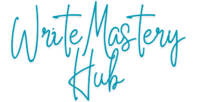……………………………………………Features of Article Writing…………………………………………..
Articles are everywhere, whether you want to skim the latest news, read a tutorial, or get into in-depth analysis on a topic that interest you.
Article writing is always considered as a way to share knowledge, stories, and insights. But what really makes one article stand out from another? Which draws our attention and continues to be read while other ones end up dead in the water?
An idea of what an article write-up entails will help bring together the most informative yet pleasing to read articles. These features make the process of idea structuring and idea refinement flow, which in turn aids it in Channeling it to connect with the readers.
Once these elements are present, an article can turn from being simple writing into a powerful tool for communication, attraction, and, in its most potent form, influence.
Let’s start by breaking down some foundational features that make article writing both an art and a science.
We’ll see how elements like purpose, audience targeting, structure, and credibility work together to make a well-rounded, impactful article.
Whether you’re writing a blog, a news piece, or a feature article, understanding these core aspects can dramatically improve the quality of your writing.
Features of Article Writing

There are eight essential features of article writing. we will talk about this one by one in depth.
Feature No 1#Clear Purpose and Audience Targeting
One of the foundational features of article writing is clarity of purpose and audience targeting.
Why? Because a well-defined purpose helps direct your focus, while knowing your audience allows you to connect with them on a personal level. Together, they shape how you approach the content, giving it meaning and relevance.
Why Defining Purpose Matters
Think of the purpose as the “why” behind your article.
Are you trying to inform, persuade, entertain, or perhaps even inspire? The purpose dictates everything—from the topics you include to the level of detail you go into.
Define the main objective
Ask yourself, “What am I hoping the reader will take away from this?” Having a clear goal helps to avoid unnecessary tangents, keeping the article focused and impactful.
Align with reader expectations
If the article’s purpose doesn’t match what the reader is expecting, they might lose interest and click away. Matching the purpose with the reader’s intent keeps engagement high.
The Importance of Knowing Your Audience
Understanding who will read your article is just as essential as having a purpose. Write an article about advanced tech concepts for an audience of the common audience versus for those with tech or technical knowledge-there is a difference in tone, complexity, even terminology.
Knowing our audience lets us choose the tone and style best suited.
Adapting the tone and language
For a professional audience, it will be more formal. However, in a blog for beginners, it is friendlier, approachable, etc.
Selecting relevant examples
They allow you to fit certain examples that can suit your readers, hence making the article relevant and personalized.
Addressing specific needs or pain points
every audience faces particular challenges and questions. By identifying these, we can formulate content that directly answers the needs of an audience, which will give more value to the article.
To sum up the topic, purpose and audience targeting are the essentials of any article writing.
They set the stage for presenting and receiving information that happens to be there and transforms content into something that speaks directly to the reader and indicates this relationship, which means you are half-way to creating a piece of work that really connects.
Feature No 2#Engaging Title and Introduction
One of the most powerful features of article writing is the ability to grab a reader’s attention from the very first moment.
In fact, crafting an engaging title and introduction is often where the magic begins.
These elements act as the “face” of your article—the first thing readers see and, often, what they use to decide whether to dive in or scroll past.
The Role of a Compelling Title
Think of your title as your article’s handshake. It’s a small but crucial introduction that needs to convey just enough to make readers curious.
A great title doesn’t just summarize your content; it promises something valuable, interesting, or even entertaining.
Be Clear and Specific
The best titles are straightforward but still intriguing. A title like “8 Key Features of Article Writing Every Writer Should Know” is direct and tells readers exactly what to expect.
Create Curiosity
Phrasing that suggests readers will gain insight or solve a problem can boost curiosity, making them want to read on.
For instance, “Why Engaging Titles Make All the Difference in Article Writing” sparks intrigue by hinting at something important.
Use Numbers or Action Words
Lists and actionable words naturally attract readers. Numbers (like “5 Tips” or “10 Features”) add a sense of structure and deliver a quick promise.
Action words (like “Discover” or “Master”) inspire readers to learn something.
Techniques for Crafting Introductions that Hook the Audience
Once readers click, the introduction has one main job: to keep them there.
A well-crafted introduction does more than just introduce the topic; it sets the tone, piques curiosity, and often frames the issue or question the article will address.
Start with a Question or Fact
Some wonderful ways to attract the reader into it are engaging statistics or a thought-provoking question. Since it invites them to think or respond, this technique works.
Tell a Brief Story
Anecdotes bring an article to a humanly relatable level when it is similar and relatable or one that has a persuasive aspect with emotional appeal.
For example, talking about the features of writing articles, a short anecdote regarding common mistakes everyone makes while writing can make it an entertaining and relative situation.
Preview What’s Next
Promising the reader that they might learn or gain something by reading the article is sometimes enough to keep readers on the page.
A sentence or phrase such as “In this article, we’ll examine crucial characteristics of article writing that can take your work from good to great” signals value and sets expectations.
Feature No 3#Organized Structure and Flow
Structure is one of the things that article writing has that will make or break the reading experience.
A good and well-structured article is like a roadmap, carefully designed to allow readers to move effortlessly from point A to point B.
There is no logical connection between sections where, even better information would begin to feel overwhelming or even unrelated.
The importance of Logical Structure
Having a clear structure, usually consisting of introduction, body and conclusion_ Is Essential.
This type of structure naturally provides a flow in which readers can digest thoughts in chunks.
every segment has a purpose:
Introduction
Introduces the topic, draws the readers in, and gives a sneak preview of what is to come.
Body
The middle section of the content, including headings and subheadings that are developed to broaden every point raised.
This section should follow the logic “every paragraph should lead to the next one”.
Conclusion
A conclusion that sums up the article’s key points or a final takeaway. At the same time, provide an opportunity to include a call-to-action, to reflect, to share, or to browse related content.
Tips for Seamless Transitions and Interest Maintenance
Transitions are bridges that take the reader across from one idea to another without getting lost or disoriented.
If each section or paragraph appears to be an island unto itself, readers will find it very hard to track the point of the essay.
Here’s how to keep the flow smooth:
Use Transition Phrases
Words and phrases such as “In addition,” “Moreover,” “On the other hand,” or “For instance” help connect thoughts and give off an air of progression.
Grouping Similar Ideas
This is a way of breaking down the body into units with subheadings and helps the reader read and understand your work easily. Different sections would carry a definite feature or idea that readers have to digest, and readers can read a concept at a time.
Recap Key Points
Summary recaps at the end of a long article or discussing complex ideas is meant to keep readers on track. Summarizing key points in bullet form, as we have done in this article, also provides quick reference points.
In other words, proper content organization and a seamless flow help set an article apart from anything else written.
Not only do they make reading easier, but they also make the whole experience a delightful one, inviting people to read an article from start to finish.
Feature No 4#Research and Credibility
One of the essential features of article writing that can make or break the trustworthiness of your work is research and credibility.
The readers prefer to know that what they are reading is correct, well-informed, and supported by credible sources.
Unless the solid Research, the most engaging article can be a flop, leaving the reader doubtful of the content.
The Need for Thorough Research and Credible Sources
Good research isn’t just about gathering information, but also about gathering the right information.
To achieve credibility, articles should source authentic sources providing pertinent, timely information or insights.
A well-researched piece of writing reflects effort and attention, therefore, it provides readers with a feeling that one has looked beyond the surface for value.
Use credible sources
Rely on academic journals, reputable news organizations, or well-known industry publications.
Cross-check information
This develops the article, lessening the chances of transmitting false information as you ask various sources for verification.
Incorporate quotes and statistics
Integrating data or expert insights doesn’t just add authority; it enriches the article by providing evidence to support your points.
How Credible Information Builds Trust and Authority
When the reader knows that your information is credible and based on reliable sources, you win their trust in reading the content.
Trust does not only improve the satisfaction of the reader, it also makes the writer appear more authoritative.
Articles that have credible sources increase the credibility of the writer and make readers come for subsequent articles.
By focusing on research and credibility, we focus on one of the most important characteristics of article writing—creating content that people will rely upon:
Feature No 5#Clarity and Conciseness
clarity and conciseness are the virtues of the internet age.
The busy online reader seeks key points, so they love articles that cut to the chase with minimal verbiage. These two qualities make an article at once easier and more effective to read.
For ideas are much more memorable when clear and concise.
Why Clear, Concise Language is Essential for Article Writers
Clear writing is about saying exactly what you mean, using simple language and straightforward sentences. A well-written article may cover a complex subject, but it should read effortlessly.
Avoid jargon and technical words
Using loads of technical terms may be tolerated by some readers, but too much jargon can alienate readers. Use straightforward, conversational words and phrases as much as you can.
Short sentences and paragraphs will be kept
Long-winded sentences and dense paragraphs have a way of overwhelming. Short forms make content digestible and keep the pace.
Examples and analogies Use
Sometimes an analogy roughly like your complicated thought can make a point better than a long explanation will do.
By focusing on clarity and conciseness, writers adhere to another critical feature of article writing—delivering valuable information in a way that’s easy to understand and enjoy.
Feature No 6#Strong Conclusion and Call to Action (CTA)
A strong conclusion is the cherry on top of an article. It wraps up the discussion, reinforces the main points, and very often leaves readers with a final thought or takeaway.
But in addition to summarizing, a strong conclusion can be even more effective when paired with a call to action (CTA).
Importance of Summarizing Key Points and Ending with a Powerful Conclusion
The conclusion is your last opportunity to make an impact. It’s where you tie together all the ideas discussed and reinforce the article’s main message.
Key points review
Summing up the key features of article writing in one or two sentences gives readers a quick takeaway, reminding them of what they’ve learned.
End with a bang
Whether it is a thought-provoking sentence or an urging hint, a memorable closing makes the readers think about your article even after they’ve read it.
How a CTA Can Engage Readers to Take Further Action
A CTA is a simple, effective way to invite readers to engage further. This action might even be as direct as asking readers to leave a comment, share the article, or read related content on similar features of article writing.
End with something like “What do you think about these Features of article writing? Let us know in the comments!” This opens up space for dialogue and can spur engagement.
Link to related articles
If your readers valued your article, they might be interested in more content on writing techniques, SEO tips, or other types of content.
Invite further reading or sharing
Invite readers to read or share more of the article.
for example, “Share this article with others who may find these tips useful!” This keeps readers engaged and increases your reach.
A strong conclusion with a CTA ensures that the article comes together in an effective and memorable way-two key features of article writing that keep readers coming back.
Feature No 7#Editing and Proofreading
No matter how well an article has been written, a round (or two) of editing and proofreading is still necessary.
It is during this stage that we refine our work and make sure it is not only free from errors but also readable, coherent, and of interest.
Currently, revising and editing is a significant feature of writing articles since it helps refine content to be even more professional and readable.
The Role of Revising and Editing to Refine the Article
In editing, one would refine ideas and adjust the flow to ensure that every sentence contributes to the meaning.
This is often an important step toward seeing one’s work from the reader’s perspective.
Editing for clarity and flow
In the process of editing, it should first clarify your arguments’ ideas and strengthen the structure of the article. Any sentences that unwittingly sound awkward or unclear can now be reworded for better readability.
Cut deadwood
Good writing often means less writing. Simplifying wordiness and keeping your sentences direct can give your article greater strength as well as clarity.
Engage the reader
Editing is also a time to ensure that the article is engaging. Seek out opportunities for anecdotes, questions, or calls to action that can expand the reader’s interest.
Tips for Effective Proofreading to Ensure Accuracy and Readability
Proofreading is the final reading, where you are supposed to look for minor errors, which might have been easily overlooked in previous drafts.
It’s about those little things—grammar, punctuation, and spelling—that can affect readability.
Read it aloud
One of the very best proofreading techniques involves reading the article out loud. The method will highlight clunky phrases or words that are easily overlooked.
Check for common errors
The most common errors are those that are usually seen in words like homophones (their vs. there), double words, or even punctuation errors that can grab the attention of readers.
Use tools, but trust yourself
For example, Grammarly or Hemingway Editor can be used to spot some of the issues, but, ultimately, they will not substitute for a human check. Use tools, not as a method to rely on, but to supplement.
In short, editing and proofreading ensure the article’s accuracy and polish, strengthening its overall quality and readability—two critical features of article writing.
Feature No 8#SEO and Readability
In today’s digital world, SEO (Search Engine Optimization) is an indispensable feature of article writing.
SEO techniques ensure that your article not only reaches your target audience but also ranks well on search engines like Google.
Higher visibility means more readers, which in turn can lead to more engagement and impact.
Brief on the Basics of SEO for Articles
SEO is about making an article “search-friendly” so it appears in relevant searches. Basic SEO techniques include using keywords (like “features of article writing”), ensuring readability, and adding meta descriptions.
Include target keywords
Naturally integrate keywords that align with the topic. Don’t overuse them, though—“keyword stuffing” can hurt SEO.
Structure with subheadings and bullet points
Search engines favor articles that are organized with clear subheadings and concise lists, which improve readability and engagement.
Optimize images and meta descriptions
If your article includes images, ensure they’re optimized with descriptive file names and alt tags. Writing a short, relevant meta description also helps search engines understand your article’s content.
How SEO Contributes to the Visibility of the Article Online
Effective SEO ensures that your article is shown more often in related searches, leading to organic traffic toward your content.
It not only increases the reach of the article but also enhances its credibility because people find it from a trusted search engine.
This article will serve the purpose well in both readability and SEO, thus resulting in a balanced piece that can easily appeal to the target audience and keep them on the same page.
This is indeed one of the very unique features or criteria of article writing for online success.
Conclusion
all these features of article writing combine to make the resultant piece interestingly informative and finely written to connect with readers.
Wherein from the onset in starting who it is for, in every step of doing thorough research, ensuring clarity or concision through to fine tuning when editing the article, every feature essentially helps bring together content that not only captures one’s attention but delivers value as well.
It will always make a difference in how far your article is carried by whom you are writing for, information, entertainment, or persuasion, and whether it logically flows as a coherent argument and upon credible sources with readability so that it’s shared often.
Don’t forget a well-crafted title, good opening, and call to action-an invitation for further dialogue.
Through these features, as you apply them to your articles, you will improve the quality of what you present before your audience, increase trust, and achieve meaningful engagement.
Take this advice, put it into practice, and watch your writing transform into a tool that educates, influences, and inspires.
Now it’s your turn! Which of the article writing features do you think is the most important?
Share your thoughts in the comments. Don’t forget to read related articles for more tips on perfecting your writing.
FAQ Section
What are the key features of article writing?
Key features of Article writing include a strong purpose and targeted audience, a catchy title and an interesting introduction, proper organization and flow, ample research and credibility, clarity and conciseness, good conclusions with a call to action, and careful editing and proofreading. For online articles, SEO and readability are also important for good visibility.
Why is research important while writing an article?
Research is essential because it forms the basis of authentic, reliable content.
It creates trust between the writer and the readers because it shows that the writer is well knowledgeable and that the information is credible. This is among the features of article writing that can establish authority.
How can I improve the readability of my article?
I have used very clear and straightforward language without jargon, and the article was structured to use subheadings, short paragraphs, and bullet points in making it easier to read and scan and understand and keep the readers engaged on the page.
What role does SEO play in writing an article?
The greater an article ranks on search engines, the bigger the reader base will be.
That way, by using the right keywords and the right method of SEO, a writer can get his articles to come up in relevant search results-that may further induce more traffic and engagement.
How do I write an effective call-to-action (CTA)?
A good CTA is specific, inspiring, and motivates the reader to take an action followed by the next one-call it leaving a comment, sharing the piece, or clicking on related topics.
It’s organic and relevant to the topic of the article and gives the readers a reason to be able to engage.



